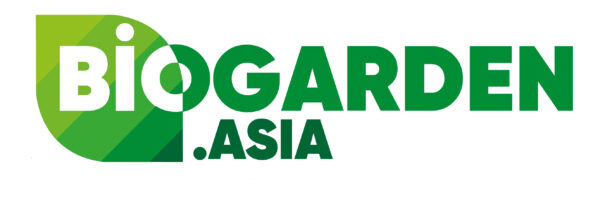No products in the cart.
NEWS
Planting a Star Apple Tree in Front of Your House: What Does it Mean and Is it a Good Idea?
Star apple trees (Chrysophyllum cainito) are beloved for their delicious fruit in many countries, making them a popular choice for gardens, and sometimes, right in front of the house. But beyond their culinary appeal, does planting a star apple tree in this prominent location hold any special significance, particularly in terms of traditional beliefs or Feng Shui? Let’s explore the meaning and practical considerations of having this beautiful fruit tree grace your front yard.
A Closer Look at the Star Apple Tree
Known scientifically as Chrysophyllum cainito, the star apple belongs to the Sapotaceae family. Originating in the Antilles and the Americas, this tropical tree is now cultivated in numerous countries around the world, including Vietnam.
Star apple trees grow quickly, featuring flexible branches and a wide canopy, often reaching heights of 10 to 15 meters. In Vietnam, two main varieties are common: the green-skinned star apple and the purple-skinned star apple. While their colors differ, their sweet, refreshing taste is quite similar.
The leaves are typically green, arranged alternately, and have an oval, simple shape with entire margins, usually measuring 5 to 15 cm long. The underside of the leaves often appears golden when viewed from a distance. Star apple flowers are hermaphroditic (having both male and female parts), with a white-purple hue and a delightful fragrance.
The fruit is round, with a skin that turns greenish-brown or purple when ripe. The ripe fruit has a sweet, cool flavor and is highly prized. The tree grows rapidly and can be propagated through grafting or air layering. With good care, trees can begin bearing fruit within just three years.
Understanding the Star Apple Tree in Feng Shui
The Feng Shui Significance of the Star Apple Tree
The star apple tree is often linked to a Vietnamese folk tale emphasizing sacred maternal love – the boundless affection a mother has for her child. Consequently, some people plant star apple trees in their front yards as a reminder for themselves and their family members of this beautiful, sacred bond. Beyond this symbolic connection, planting a star apple tree near the entrance is also seen as an expression of the desire for strong, close-knit family ties, fostering mutual love and support, much like the deep maternal love in the legend.
Is Planting a Star Apple Tree in Front of the House Beneficial?
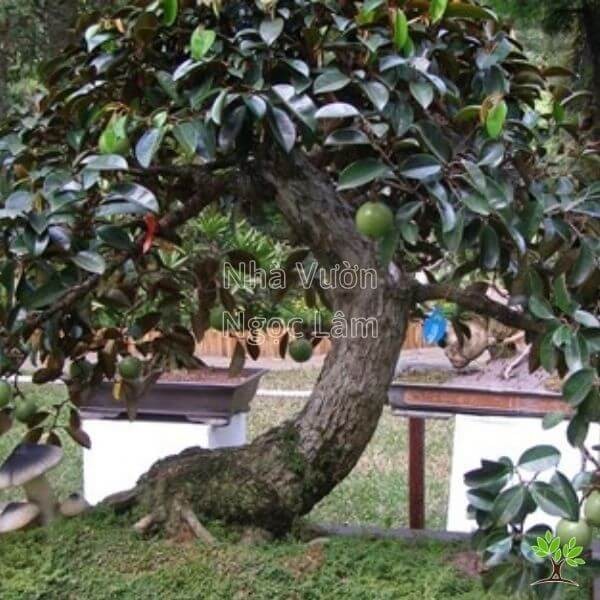 Star Apple Tree in Front Yard
Star Apple Tree in Front Yard
Today, star apple trees are widely planted in various locations – gardens, front yards, streets, and parks. They provide both delicious fruit and serve as attractive landscape elements, offering shade.
Benefits of planting a star apple tree:
- It provides oxygen, absorbs toxins and dust, and helps create a fresh, cool atmosphere.
- The fruit is sweet, fragrant, and delicious, often fetching a high economic value.
- Tree leaves can be used in traditional remedies for ailments like rheumatism or diabetes.
- The tree bark contains beneficial substances and has been used to treat coughs.
Given its symbolic meaning and practical benefits, planting a star apple tree in front of your house is generally considered very beneficial. However, when selecting a spot, it’s important to be mindful. The area directly in front of the house is considered crucial for the flow of energy (Qi), where both positive (yang) and negative (yin) energies gather.
Therefore, avoid planting the star apple tree directly in the center of the main entrance or in high-traffic areas. Choose a location that is open, well-ventilated, and allows for easy movement. For houses with small frontages, planting a star apple tree might not be ideal, as its rapid growth and large canopy could obscure the view and detract from the house’s facade.
Which Astrological Signs are Compatible with the Star Apple Tree?
The star apple tree, with its green leaves and fruit (often green or purple-green before full ripeness), is associated with the Wood element in Feng Shui. Therefore, individuals whose elemental sign is Wood are considered particularly well-suited to planting this tree in front of their homes. According to the generative cycle of elements, Wood nourishes Fire, so people with the Fire element sign may also benefit from planting a star apple tree, potentially attracting good fortune, harmony, and favorable conditions in their work and life.
Effective Star Apple Tree Planting Techniques
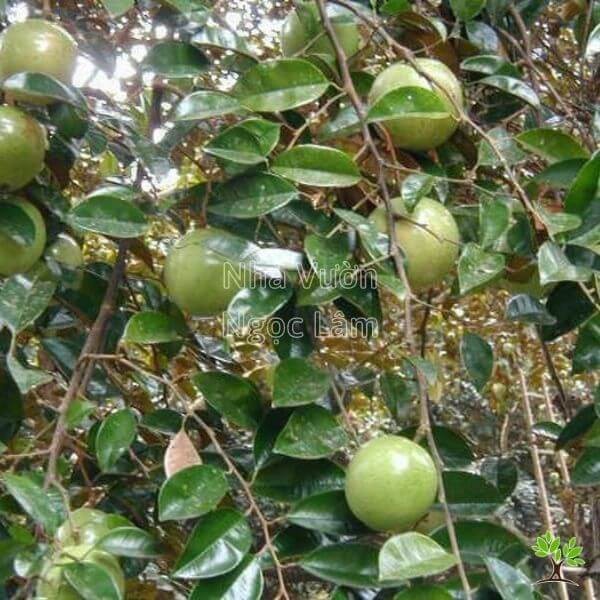 Star Apple Tree Fruit
Star Apple Tree Fruit
Selecting the Right Variety
Choose healthy, disease-free saplings. Several star apple varieties are suitable for planting in front of the house, such as the Lo Ren variety (known for its bright, glossy white flesh when ripe, offering a very delicious taste). Other popular varieties include the Purple and Brown star apples.
Soil Conditions
Star apple trees are not overly demanding regarding soil types, but for optimal growth and fruit development, choosing alluvial soil from riverbanks or light loamy soil with good drainage is recommended. The ideal pH range is 5.5 – 6.5.
If planting in a front yard, you can use pre-mixed soil or prepare the soil by mixing it with well-rotted chicken manure, cow manure, worm castings, rice husks, coir, organic matter, or peat moss. It’s crucial to treat the soil to eliminate pathogens before planting. Mixing the soil with lime and letting it air out for 7-10 days before planting is a good practice.
Planting Time
While star apple trees can be planted year-round, the beginning of the rainy season is generally the best time. This is typically around July-September in Northern and Central Vietnam and June-July in Southern Vietnam, corresponding to periods with sufficient moisture to help the young trees establish.
Planting Steps
About 10-20 days before planting, dig a hole approximately 40-50 cm wide and 20-25 cm deep. Thoroughly mix the excavated soil with 20 kg of decomposed animal manure or organic fertilizer, 100g of DAP, 200-300g of superphosphate, 10-20g of Basudin 10H (or similar insecticide/nematicide if needed, following local regulations), and 1-1.5 kg of lime. Let this mixture sit and air out in the hole for 10-20 days before planting.
When ready to plant, carefully remove the plastic bag from the root ball. Place the root ball upright in the center of the hole, ensuring the top of the root ball is level with the surrounding soil surface. Fill the hole with the prepared soil mixture, gently firming it down. Install stakes to support the young tree and water thoroughly to maintain moisture.
For the first 1-2 years after planting, provide shade to protect the young tree from direct sunlight. Since star apple roots tend to grow shallowly, mulching around the base with straw, dry leaves, or other organic materials is essential to retain soil moisture. When mulching, leave a gap of 30-50 cm around the trunk to prevent rot.
Important Considerations When Planting in Front of the House
As mentioned, planting a star apple tree in front of your house is generally considered beneficial, but mindful placement is key to maximizing positive effects and avoiding potential issues. According to some Feng Shui principles, planting a star apple tree in the front yard is a way to attract positive energy (yang) into the house and limit the presence of negative energy (yin). Therefore, avoid planting in locations that restrict the tree’s growth, as this is believed to negatively impact the house’s Feng Shui.
Another important note is to avoid planting the tree directly in the center of the main entrance or in areas with frequent foot traffic. Opt for a spacious, well-ventilated location with less movement. Do not plant the tree too close to the house foundation, as the mature tree’s root system can potentially affect the structure. Also, the wide canopy can obstruct the view of the house.
Because the star apple tree develops its trunk and canopy very quickly and widely, regular pruning is necessary. Keep the tree tidy to avoid obstructing the flow of good energy, preventing the accumulation of negative energy, and maintaining clear visibility for the house.
While beneficial, for homes with small frontages, consider carefully whether planting this species is suitable. A large, mature star apple tree can easily cover the entire facade, which is not considered good Feng Shui for the house.
Star Apple Tree Care Techniques by Stage
Fertilization
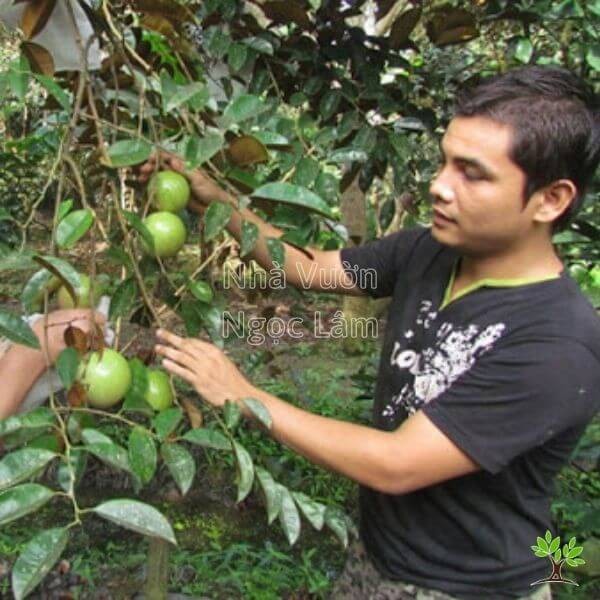 Caring for Star Apple Tree
Caring for Star Apple Tree
Fertilization varies depending on the tree’s developmental stage. When applying fertilizer, do not place it directly against the trunk. Instead, distribute it evenly around the tree, approximately two-thirds of the way from the trunk to the edge of the canopy.
Young Trees (0-1 year): Fertilize monthly. Dissolve 20-30g of DAP fertilizer in 20 liters of water and water around the base of the tree.
Young Trees (1-3 years): Annually apply 1-2 kg of a mix of Urea + DAP + NPK (20-20-15) in a 1:1:1 ratio. Divide this amount into 4 applications spaced 2-3 months apart throughout the year.
Mature Trees (5+ years): Once the tree reaches its 5th year and enters a stable flowering and fruiting phase, fertilize 4 times annually: before flowering, during fruit set, while fruit is developing, and 1-2 months before harvest. The amount of fertilizer will increase gradually with the tree’s age.
- Application 1: Before flowering and immediately after the previous harvest: Apply 5-10 kg of lime. 10-15 days later, apply 20-40 kg of well-rotted organic fertilizer and 3-4 kg of NPK (20-20-15).
- Application 2: When fruit has set and reached about 1 cm in diameter: Apply 1-2 kg Urea + 1-2 kg DAP.
- Application 3: When fruit is about 3 cm in diameter: Apply 2-3 kg NPK (20-20-15) and 1-2 kg Potassium Chloride.
- Application 4: About 2 months before harvest: Apply 1-2 kg NPK and 1-2 kg Potassium Chloride.
Important Notes:
- Fertilizer applications should be spaced about 2 months apart.
- Before fertilizing, clear weeds and debris from the base of the tree. Fertilizer can be broadcast on the surface or applied in a shallow trench 5-10 cm deep dug around two-thirds of the canopy’s drip line.
- After applying fertilizer, cover the base with organic mulch and water consistently for about a week to help the fertilizer dissolve into the soil, making it easier for the tree to absorb.
Watering
Water is a crucial factor for healthy growth and abundant fruit production in star apple trees. The required watering schedule varies by stage:
Young Trees (First 3 years): Water 3-5 times per week. Apply 20-30 liters of water per tree per watering, especially during the dry season, to prevent wilting and promote rapid growth.
Flowering and Fruiting Stage: Water more frequently, about every 2-3 days.
Pruning
In the first year after planting, prune to establish a good shape. Select branches distributed evenly in different directions to form a balanced, round canopy. Aim to keep the height manageable, ideally not exceeding 4-4.5 meters. Remove upright branches within the canopy, diseased branches, overcrowded branches, and low-growing branches near the ground.
After each harvest, prune out vertical branches inside the canopy, diseased or weak branches. This helps improve air circulation and light penetration, encouraging new growth.
For older trees (20+ years) that exceed 6 meters in height, regular rejuvenation pruning is recommended. This technique should be applied gradually over 3-4 years, working on different sections of the tree each year.
Rejuvenation Pruning Technique: After each harvest, saw off 1-2 tall, sparsely leaved branches showing poor growth and low productivity. Cut these branches back to 30-50 cm from the main trunk. To avoid damaging the cambium and ensure future sprout regeneration, continuously pour water onto the cut area while sawing to prevent excessive heat from friction. Make cuts at a 45-degree angle to prevent water pooling.
After cutting, seal the wounds with a copper sulfate solution or a commercial wound sealant. After 15-20 days, 5-15 new shoots will emerge below each cut. Select and keep only 2-3 strong shoots around the branch stump, removing the weaker ones. Once these new shoots grow to 50-60 cm in length, pinch or cut off the tips (apical buds) to encourage further branching. These new branches can begin bearing fruit within 12-18 months.
Common Diseases and Pests
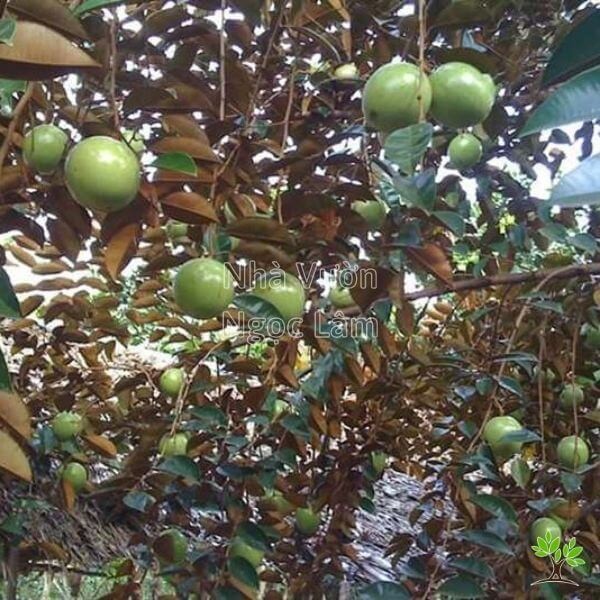 Star Apple Tree in Front Yard Feng Shui
Star Apple Tree in Front Yard Feng Shui
Fruit Rot
Symptoms: Affects fruit from young to mature stages. Starts as small brown or black spots. If untreated, these spots enlarge and merge, potentially covering the entire fruit, causing the flesh to become hardened and rotten, leading to fruit drop.
Cause: Caused by fungi, such as Colletotrichum sp.
Control: Maintain a clean, well-ventilated orchard with adequate sunlight penetration. If the disease appears, apply fungicides like Score, Antracol, Daconil, Nustar, Benamyl, etc., following recommended dosages to prevent spread. Remove and destroy affected fruits.
Fruit Rot caused by Lasiodiplodia theobromae
Symptoms: Severe in the rainy season. Primarily affects fruit during harvest and transport, causing dark brown, soft rot, often starting near the stem end and spreading rapidly, especially in warm, humid conditions (within 2-3 days).
Control: Handle fruit carefully during harvest to avoid skin damage and detachment from the stem. Pack fruits individually in lined containers. Regularly prune and destroy diseased branches and fruits to reduce the source of infection in the garden.
If infected, apply fungicides such as Tilt super, Dithane, Carbenzim, Benlate, Manzate, Topan, etc., following recommended dosages.
Sooty Mold
Symptoms: Caused by fungi that form a black, powdery or sooty coating on leaves, stems, and fruit. While not directly damaging the plant tissue, this black layer reduces photosynthesis, negatively impacting tree growth and development. This disease thrives in sunny conditions and is often associated with the presence of sap-sucking insects like mealybugs.
Control: To prevent outbreaks, maintain a well-pruned canopy for good air circulation. Control sap-sucking insects with insecticides like Bassa, Trebon, etc., combined with fungicides like Copper Zinc, COC-85, etc., at recommended rates.
Fruit Borer
Symptoms: Larvae infest fruit from about 2 cm diameter until maturity. They bore into the fruit, feeding on the flesh and causing it to rot internally.
Control: Apply insecticides like Cymbush, Trebon, Karate, etc., at recommended dosages. Spray when moths are observed or when fruit damage reaches 2-3%. Stop spraying at least one month before harvest to avoid pesticide residues in the fruit.
Mealybugs
Symptoms: These pests primarily attack young leaves, shoots, and developing fruit. If not controlled promptly, they can spread throughout the tree. Infested areas become stunted or distorted due to the insects sucking out sap and nutrients. Mealybugs are often more problematic during the dry season.
Control: Apply systemic insecticides like Supracide at recommended concentrations, or use other systemic options like Basudin (follow local regulations and recommendations) to control the infestation.
This concludes the basic information regarding the question “What does planting a star apple tree in front of your house bring?”. As experts in agriculture and proud content creators for Biogarden.Asia, we hope this guide helps you successfully grow a star apple tree in your front yard, potentially bringing many blessings and beauty to your home.
